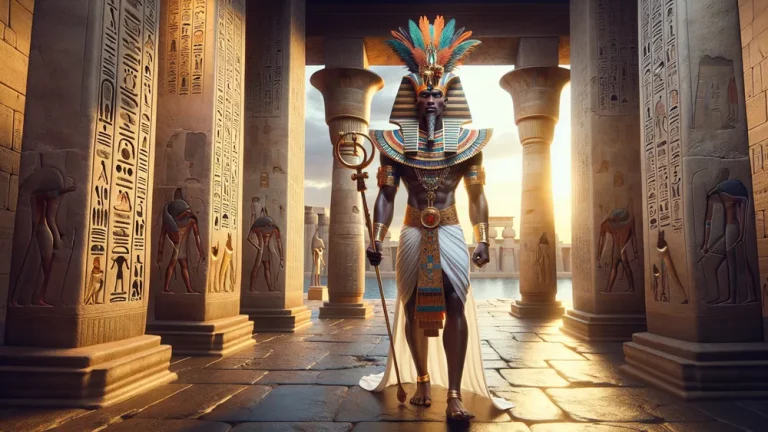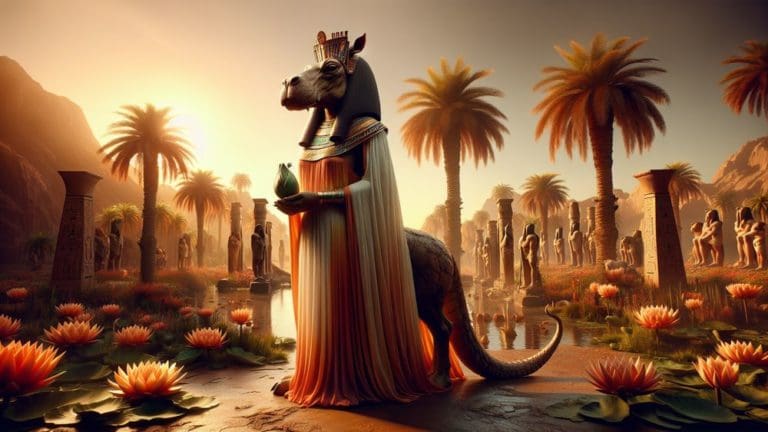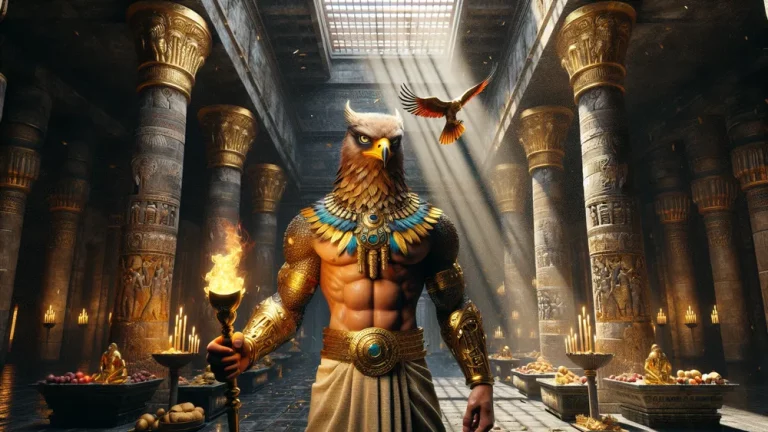The Role Of Gymnastika In Ancient Greek Sports And Culture
In ancient Greece, Gymnastika was more than just a set of exercises – it was a significant way of thinking that pulled together mental ability, physical effort, and even spiritual purpose. Gymnastika comes from an old belief that aimed to reach “arete,” or the idea of doing your best in every part of life.
Key Points:
- Gymnastika in Greece mixed physical training, thinking, and spiritual purpose.
- Training was done naked for freedom and to honor gods like Zeus and Nike.
- Heroes like Heracles and Atalanta inspired athletes with their strength and skill.
- Gymnasia were places for exercise, learning, and religious ceremonies.
- Men focused on fitness for war or balance of mind and body, women had fewer chances but joined events like the Heraean Games.
- City-states like Sparta and Athens unified through contests like the Olympics, reflected in Gymnastika.
- Greek beliefs in strength, strategy, and dedication still influence modern sports.
Think of a culture where being physically strong wasn’t treated like a skill on its own but was seen as part of what made a person well-rounded. It meant everything – from a soldier staying tough during battles to a thinking man training his body to match his clear, logical mind.
In the Olympics and other big events, people saw Gymnastika as a way to celebrate not only what humans could do but also to connect to gods. Strength, running, wrestling – it all meant something bigger. The gods like Zeus, who was in charge of protecting contests, or Nike, who meant victory, were connected directly to physical effort. The gods played a big role in how people understood sports and athletics.
Heracles was a well-known example of Gymnastika and the skill it needed. He fought monsters and finished big tasks like wrestling the Nemean Lion, which meant strength and hard work were things that mattered. Atalanta’s story – how she raced any man who wanted to marry her – helped create the idea that women also had the ability to be excellent in their physical skills.
Not just exercise, Gymnastika was held as something important, a bridge between human lives and the gods above. It tied together personal goals, training your body, and helping the community all in one.
Gymnastika: Overview and Key Facts
| Key Aspect | Description | Examples/Key Details |
|---|---|---|
| Definition | Gymnastika was a way to train both the body and mind, combining them to be at your best as a person. | It came from the Greek idea of “arete“ (doing your best), which mattered for being strong and doing good things for society. |
| Etymology | The name comes from the word “gymnos,” which means “naked.” | People trained without clothes. This was meant to show purity and natural strength and give respect to the gods. |
| Cultural Significance | It was an all-around system of fitness, learning, and religion. | Gymnasia were not only for exercising – they joined training with ideas and rituals, building a full Greek way of life. |
| Relationship to Mythology | Strength and skill were inspired by gods and heroes in Greek myths. | Heracles meant strength through big tasks, and Nike (who meant victory) pushed athletes to aim for what’s excellent. |
| Purpose | It aimed at making people healthy, good, and useful to the city. | It gave Spartans what they needed for military life and also made events like the Olympics special for what people could do. |
| Integration Within Society | Gymnastika was part of daily life, mainly for men, helping them balance mental and physical skills. | Women also did sports in things like the Heraean Games, often based on ideas from myths like Atalanta’s stories. |
| Modern Legacy | Gymnastika influenced today’s sports and physical education. | Wrestling, running, and pankration became the base of modern activities, and its all-around ideals apply to fitness even now. |
Where Gymnastika Began in Ancient Greece
To really see how Gymnastika started, it’s important to think about what life was like in old Greece. Things like philosophy, beliefs about gods, and athletic life were all connected. You can understand where it came from by looking at how it made a difference in parts of life like language, buildings, and how people worked together.
What Does the Word Gymnastika Really Mean?
The word “Gymnastika” comes from the Greek word “gymnos,” which means “naked.” For the ancient Greeks, training without clothes wasn’t only practical because it let them move freely. It also had important meanings for both morals and symbols. Athletes thought being naked meant staying pure, both in body and spirit.
They believed it made them closer to gods and closer to what they called perfection. Being without clothes removed anything fake or unnatural, putting focus on the universal form of the human body. It stood for things like honesty, discipline, and making a clear connection between people and their gods.
To understand why Gymnastika was so central to Greek life, it’s important to look at three main goals:
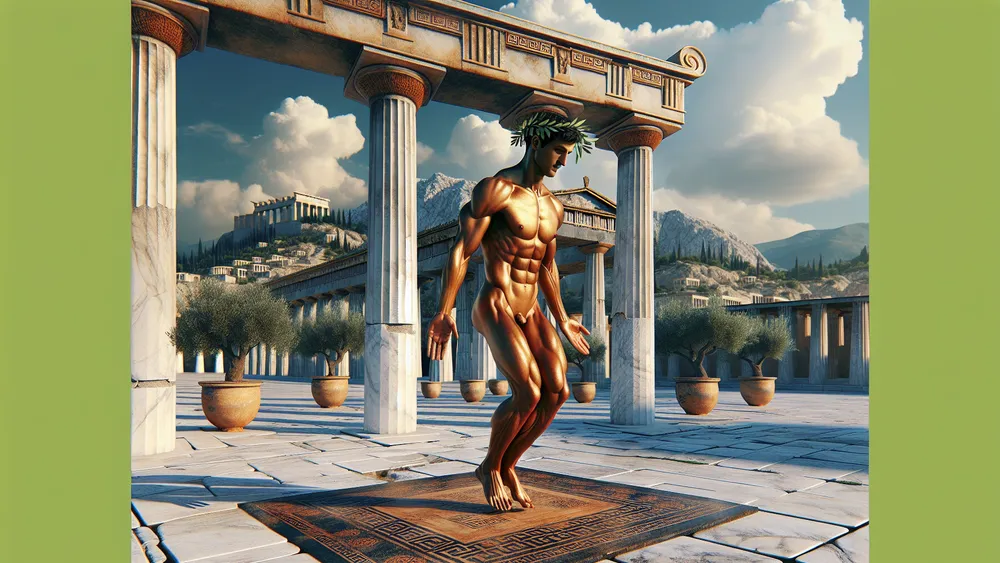
- Staying healthy: Strength and physical ability were considered essential for helping families, cities, and society as a whole.
- Respecting gods: Doing your best in training and contests was seen as sacred. It connected the athlete to gods like Zeus and Hermes.
- Striving for excellence: Pushing both your body and mind to their best was part of “arete,” which meant virtue and doing what was right for yourself and your community.
The Greeks saw training naked as a way to stay healthy, connect with their gods, and aim for excellence in both body and mind.
Gymnasia: The Heart of Greek Life
In ancient Greece, gymnasia were much more than places to train. They were centers for physical activity, thinking, and religion-based events. These places often had open areas for workouts, shaded spots where people could stretch or watch, as well as rooms where lessons and discussions about big ideas happened.
Exercise mattered a lot, but it was also linked to improving how people thought. The Greeks believed that having a strong body was just as important as having a strong and sharp mind. Young men trained their bodies and also listened to talks or debates about things like ethics and math. This reflected their focus on becoming better in every way – physically and mentally.
Religion was a vital part of gymnasia, too. Events and ceremonies were commonly held, often for gods such as Hermes, who stood for athleticism and communication, or Apollo, who was connected to harmony and discipline. These gymnasia weren’t just simple exercise areas. They stood for how the Greeks worked hard to improve themselves, combining their learning, spirituality, and fitness in one place.
Plato’s Academy in Athens is maybe the most known example of this idea. It mostly focused on teaching philosophy. But students there also trained their bodies, showing how education and exercise could go together. Other gymnasia, like Aristotle’s Lyceum, followed this example. These places combined physical routines with lessons about ethics, science, and logic.
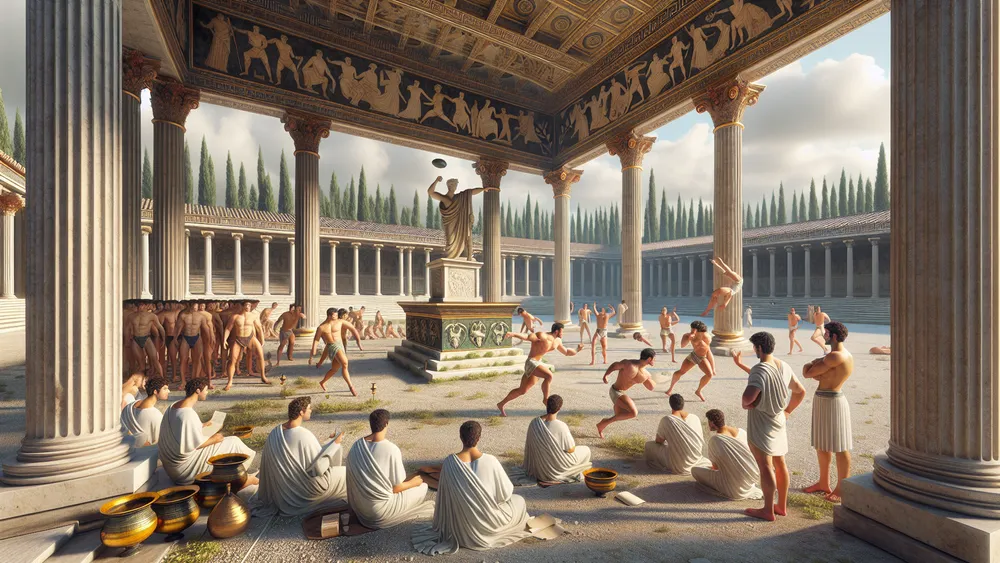
Gymnasia were more than schools or areas for practice – they were special places that helped people grow into what we would call well-rounded individuals.
How Training United the Greek City-States
Gymnastika was a vital way to connect the divided city-states of ancient Greece. It gave them a shared focus on discipline, physical skill, and national pride. For Sparta, this training system wasn’t just important – it was required. They used it to prepare young people for war and for working together in battle formations. The Spartan way, called the agoge, included exercises in endurance, wrestling, and fighting.
It was very intense. The stories of Heracles, like wrestling the Nemean Lion or cleaning large stables, became examples for Spartans. These tasks were reminders of physical strength and persistence, both traits a Spartan citizen needed. Athens looked at Gymnastika differently. It wasn’t only about physical fitness. Athenians thought the mind also had to grow. This is why their gymnasia were places for both intellectual talks and athletic activities.
Young men could train their bodies while listening to lessons about philosophy, math, or ethics – mixing physical goals with building their character. In a way, this approach let people see both physical and intellectual ability as equally important, helping them understand each other better. Even with their differences, city-states saw Gymnastika as a way to encourage personal and group success.
Contests between regions and big events like the Olympics gave them chances to connect. For example, Spartan fighters known for their tough drills could compete with Athenian athletes, skilled in both their strength and grace. They respected each other. Greece’s myths also brought the city-states closer. Spartans admired Heracles, who stood for pure strength.
Athenians looked up to Theseus, someone who used power and clever ideas, like in the story where he defeated the Minotaur. These ideas connected Gymnastika to the legends, adding meaning to the way city-states worked together, despite their rivalries and differences.
Gymnastika in Greece’s Stories and Legends
The ideas of Gymnastika were closely connected to Greek myths about heroes. Stories about famous people and their incredible deeds became examples of how to live both physically and morally strong. Heroes were looked up to for this reason. In ancient Greece, these stories had a purpose. They helped shape both training and athletic contests.
Famous Heroes of Gymnastika in Greek Mythology
The myths of ancient Greece are filled with heroes who represent the ideas of Gymnastika – aiming for greatness, using power and mental focus together, and working hard to achieve big goals. Few heroes show these ideas better than Heracles, Theseus, and Atalanta. Each of them had qualities that stood as examples for athletes in the ancient world. Heracles is remembered for being a symbol of toughness.
Theseus stands for cleverness and strength working together. Atalanta is an example of a female athlete who stood out in a male-centered society. These stories shaped how Greeks trained and competed. Athletes aimed to copy the incredible challenges found in these myths. Heracles is one of the best-known heroes for strength and endless effort. His Twelve Labors are full of big Gymnastika challenges.
One labor that stands out is when he wrestled the Nemean Lion, a beast no one could hurt because of its tough hide. Heracles had no weapons. Using only his raw strength, he caught the lion in his hands and wrestled it to the ground. Spartans liked this story because it showed how strength and pushing through pain were key ideas in their harsh training.
Theseus, the hero of Athens, balanced his thoughts and action. His biggest story was about the time he entered a maze called the Labyrinth, made by King Minos. Inside, he had to defeat the Minotaur, a strong half-bull, half-human creature. He used skill in fighting but also his mind. He held onto Ariadne’s thread to find the way out. This story fit Athens’ way of thinking.
They believed training wasn’t just about the body but also the mind. Atalanta was different. She was a rare female figure in myths who became famous for her speed and agility. Her most well-known story was about racing against men. She won against many suitors in running competitions. But one race with Hippomenes was different. He won only by using golden apples to slow her down.
Atalanta’s story inspired women’s sports events like the Heraean Games. It showed that being physically skilled wasn’t only for men.
- Mythological Heroes in Gymnastika:
- Heracles: Strength, effort, and not giving up in hard tasks.
- Theseus: Using strategy and action together.
- Atalanta: Speed and women’s athletic skill.
How the Olympics Came From Heroes and Myths
The start of the Olympics is closely connected to Heracles, a hero from ancient myths. In one version of the story, when Heracles finished his fifth labor – cleaning the massive stables of Augeas in a single day – he started the Olympics to honor Zeus, the king of the gods and also his father.
This labor, where he had to redirect two rivers to clean up years of filth, means that Heracles was both very strong and clever. To make the event special, Heracles measured the stadion, which was the distance used in Greek races, and dedicated the festival to Zeus. Even though there are different versions of the story, the link between Heracles and the Olympics lasted.
To the Greeks, competing in sports meant honoring the gods and showed that being physically excellent was connected to something sacred. Some events, like the pankration, were tied to the kinds of fights heroes would face in myths. It was one of the hardest sports in the ancient games. This event was a mix of wrestling and boxing, but with almost no rules.
It was rough and a test of pure strength and endurance. Heroes like Heracles and Theseus often won fights just by using their hands. For example, when Heracles wrestled the Nemean Lion, he didn’t use any weapons – just his bare hands. This is the same kind of toughness seen in a pankration match.
The Greeks connected their sports to hero stories, seeing these contests as ways to practice the strength, smarts, and toughness of their best legends. Today’s Olympics continue some of these old ideas. Modern athletes compete by using strength, strategy, and the will to win.
Mythical Lessons About Strength, Brains, and Balance
Greek myths are full of characters who represent the ideas of Gymnastika. These include physical power, mental skill, and the ability to move quickly. Achilles from the Trojan War is a great example of strength. His success during the war came not only from his godlike background but also from training that made his body strong.
This focus on strength was very important in Gymnastika. In sports like wrestling and pentathlon, winning often depended on how powerful someone was. But strength was not everything. Odysseus, known for his clever thinking, showed how ideas and strategy were just as important. He used intelligence to trick the Trojans with the Trojan Horse, and during his long journey in the Odyssey, he used his mind to survive many challenges.
In Athens, people believed in training both the body and the mind. This reflected how Odysseus was able to stay sharp and endure tough times. Another hero, Perseus, was an example of agility. He showed this when he killed Medusa, a monster whose eyes could turn people into stone. To succeed, Perseus had to think and move fast.
He used his tools wisely, like winged sandals and a shield that let him see Medusa without looking directly at her. His quickness shows how agility and speed were important in Gymnastika. Events like running and gymnastics focused on these skills. Together, all these heroes represented what the Greeks wanted to be – strong, smart, and fast.
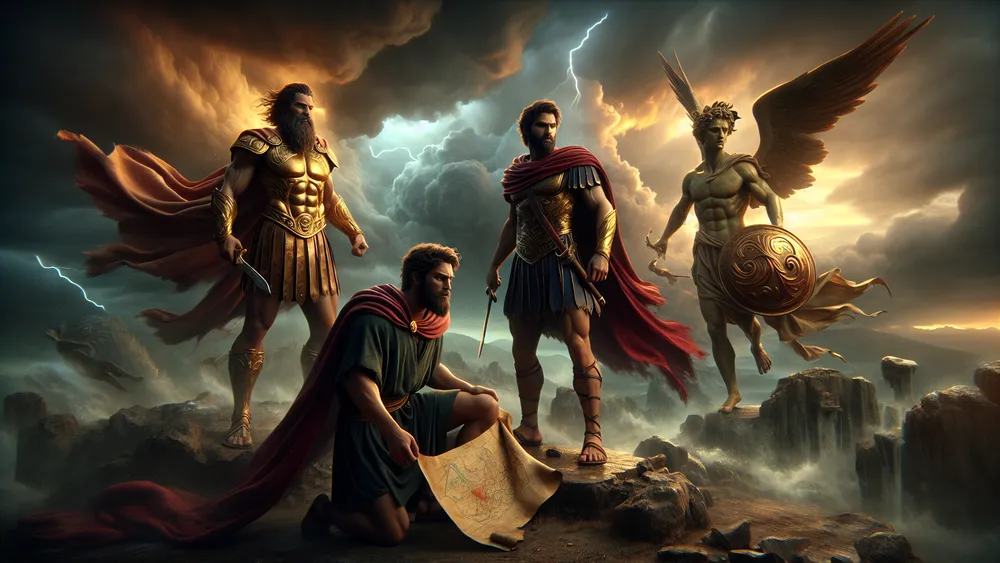
Their stories taught people how to train harder and push themselves beyond normal limits.
| Hero | Key Trait | Mythological Story | Connection to Gymnastika |
|---|---|---|---|
| Achilles | Strength | Fought in the Trojan War | Focused on physical power, like in wrestling. |
| Odysseus | Strategy and Wit | Used the Trojan Horse and adapted during the Odyssey | Connected mind and body, like Athenian training. |
| Perseus | Speed and Bravery | Killed Medusa using special tools | Highlights agility, like in gymnastics or running. |
Greek myths, with heroes like Achilles, Odysseus, and Perseus, underline the Greek ideals of being strong, clever, and quick, which shaped how they trained both body and mind through Gymnastika.
Daily Life With Gymnastika: How They Kept Fit
We’ve studied the mythological roots of Gymnastika. These stories were important, but what about daily life? Now, let’s think about how ancient Greeks brought these ideas into their routines. This change wasn’t limited to just one part of life. It affected how they lived and trained. Both their daily habits and their methods for staying strong reflected these ideals.
What Athletes Did in Training
Training in ancient Greece was focused on basic exercises to get the body and mind ready for sports. Runners trained on narrow, dirt tracks called stadions. They practiced short sprints as well as long-distance runs, building both speed and endurance. Wrestling was another important type of training. Wrestlers developed strength and skills. When they wrestled, they prepared for matches in ways inspired by heroes like Heracles, who fought in famous myths.
Not all exercises were so hard, though. Some were simple. Athletes used their own body weight for exercises like squats and push-ups. These helped them stay flexible and have control over how they moved. But what made their training special was the connection to religion. Before training, many athletes prayed to gods like Apollo or Zeus.
Apollo, who stood for balance and harmony, and Zeus, who was the god of strength, were important to them. By praying, athletes tried to do more than improve their strength. They wanted to show respect to the gods and hoped their training would also gain divine support. Food was also important for athletes. Their coaches created meal plans for them. Food wasn’t just eaten to stay alive.
It was also used to help their bodies perform better and stay in good condition. Simple foods, like barley, olives, and fresh fruits, gave them energy and helped them recover. Protein was especially helpful for strength, coming from foods like fish and cheese. But coaches were careful.
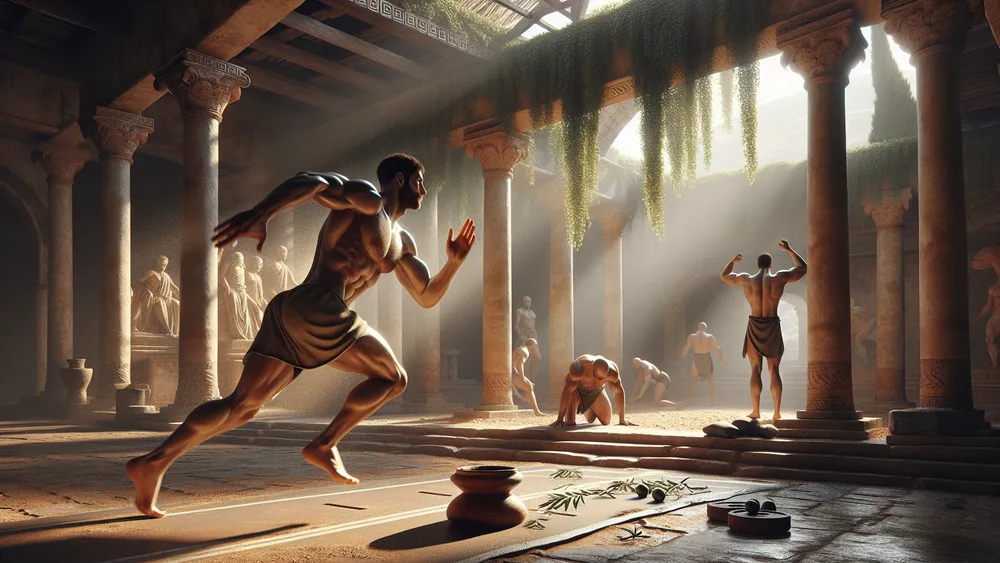
Eating too much or eating unhealthy foods was thought to disturb both the body and the mind. People who wanted divine inspiration needed to keep their bodies healthy and disciplined. This method of focusing on food can seem similar to modern athlete diets with plans designed to improve performance. The Greeks already believed in keeping the body and mind perfect, just like today.
Men, Women, and the Mythological Side of Gymnastika
In ancient Greece, Gymnastika was mostly something men did. They trained especially hard in places like Sparta, where working on the body was part of getting ready for war. Spartan boys grew up in the agoge, which was a strict system of teaching and physical training. The goal was to make them the strongest and most disciplined warriors.
Many of them looked up to Heracles, a hero famous for his strength and his ability to finish hard tasks, like the Twelve Labors. Spartan training copied this idea by forcing young men to take on tough challenges. They wrestled, they ran, and they practiced pankration, a kind of fighting without many rules. These activities reminded them of mythical heroes who had to defeat seemingly impossible enemies. In Athens, things were different.
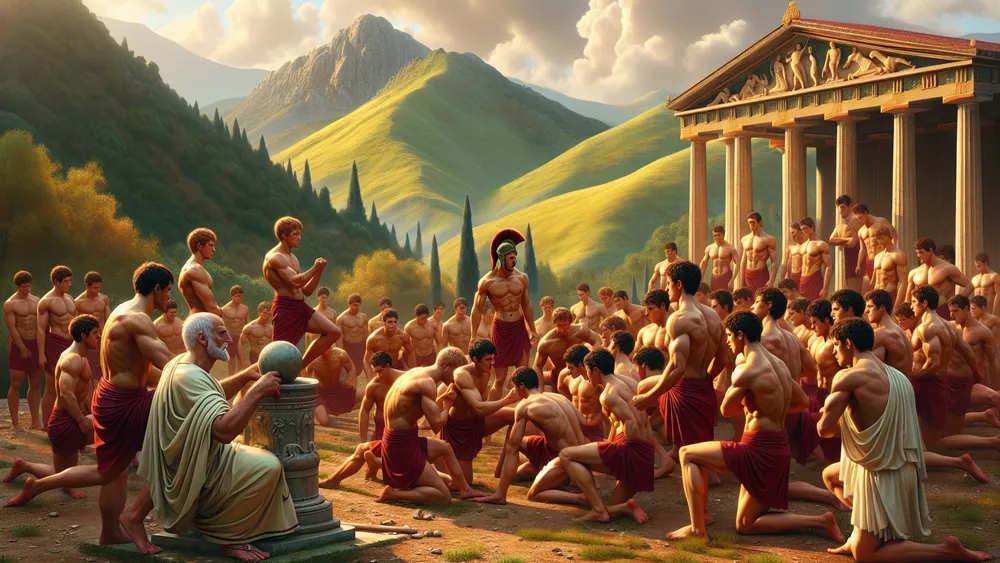
Training there was not about preparing for war. Instead, men trained in gymnasia to stay healthy and combine a strong body with learning, and they found inspiration in gods like Apollo and Zeus. Women, however, were not completely left out. Events like the Heraean Games gave them the chance to compete.
These competitions were held in honor of Hera and included activities such as running. Women’s sports were smaller in scale and more ceremonial, but they still had a role. Female athletes were sometimes inspired by figures like Atalanta, a mythological woman who was very fast and even hunted dangerous animals like the Calydonian Boar.
In a culture where men usually dominated athletics, Atalanta stood out as a figure who broke the rules. Spartan women were given more freedom to train than women in Athens, which is why they stayed stronger physically.
Even though their opportunities were not equal to men’s, women made their contributions to Gymnastika by working hard and following the examples of mythological figures important to them.
The Gods and Powers Behind Gymnastika
The practice of Gymnastika was closely tied to the powers of the gods and certain abstract ideas. The Greeks believed that human effort and divine forces worked together. Nike, the goddess of victory, stood for winning and success. She inspired athletes to aim for greatness in both sports and life. For strength, people turned to Kratos, a figure who stood for power and determination.
He reminded them of the willpower needed to break past physical limits, which became one of Gymnastika’s core ideas. Arete was also important to many athletes. This idea meant striving for excellence and reaching your highest potential. It included moral and even spiritual ideas, not just physical ones. Athletes worked hard to reach Arete, making it a guiding principle of how they trained and competed. These beliefs weren’t just personal.
They helped connect athletic training with religion and the sacred side of life, giving athletes a sense of purpose. Readers who want to learn more about these ideas or similar Greek forces can look at this list: greek Abstract and Natural Forces list. This link explains how powers like Nike and Kratos played a role in Greek thinking.
The way these divine forces tied human strength to spiritual goals helps us see how deeply the Greeks linked physical skills to their bigger ideals.
FAQs
1. Why was nudity emphasized in Gymnastika?
Nudity was emphasized in Gymnastika because it symbolized physical purity, equality among participants, and the celebration of the human form as a divine creation.
2. How did ancient Greek gods inspire Gymnastika practices?
Ancient Greek gods inspired Gymnastika practices by embodying ideals of strength, discipline, and excellence that athletes sought to emulate in both body and spirit.
3. How does modern gymnastics compare to Gymnastika?
Modern gymnastics compares to Gymnastika by emphasizing physical excellence and discipline, but lacks the deep integration of spiritual and communal ideals central to ancient Greek life.
4. Were women allowed to fully participate, and how?
Women were not allowed to fully participate in most athletic events in ancient Greece, though they engaged in separate activities like the Heraean Games dedicated to honoring Hera.

